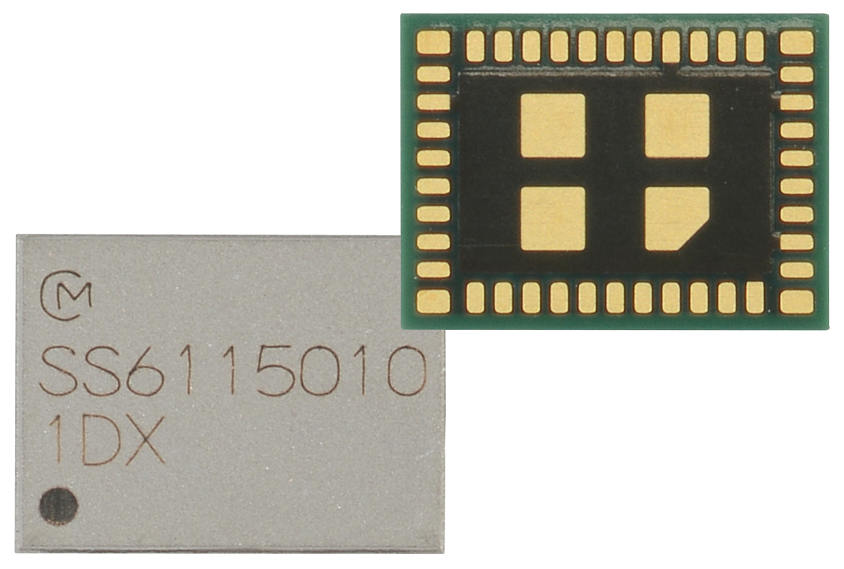Correctly selected connectivity is essential to an effective Internet of Things
By Rui Ramalho, Product Manager – WLAN/BT, Murata Europe
The Internet of Things (IoT) is rapidly transforming the world we live in. There are now far more connected devices communicating with each other than there are people on the planet, and that looks set to grow significantly as new devices and applications emerge.
By definition, each of the devices has to be able to communicate to be considered ‘connected’, with advances in communications protocols and the associated hardware being key enablers for continued IoT growth and success. However, with so many applications with differing needs, and a significant number of protocol options available, entering the world of IoT connectivity can be a daunting prospect for some.
In this technical article, Murata Europe will look at how key communication technologies have evolved to meet the complex, and sometimes challenging, needs of the IoT as well as revealing a hardware solution that will significantly ease the design task.
While many estimates of the scale and size of the IoT can be challenged, it is without question that there are more connected devices than people these days. Cisco estimated that the point at which connected devices began to outnumber people was way back in 2004/5. Growth has been significant since that point, with more smartphones, wearable devices, smart cities, smart homes, smart factories and even connected cars contributing to it.
Leading research firm Gartner estimates that there will be over 11 billion connected devices by the end of 2018 and, by 2020, this number will have almost doubled to 20 billion. Associated revenues are expected to increase, but at a lower rate, indicating that prices will come under pressure, and the current trend is for smaller and simpler nodes to be added to the IoT.
Selecting IoT communications protocols
A number of considerations need to be taken into account when selecting the correct protocol(s) for an IoT application. Given the fact that many IoT nodes are remotely located so that they can collect data, range is a key consideration. The remoteness of nodes also makes the availability of power a point to be considered, especially if the only power source is a battery – the inconvenience of frequent battery replacement can be significant.
While many of the communications associated with the IoT involve small packets of data from relatively simple sensors, in some applications such as vision-based systems, data throughput can be significant.

Figure 1: By considering a few important criteria, the choice of IoT communications protocol becomes easier
The size and scale of the network is also a consideration, as some protocols lend themselves to tens or even hundreds of simultaneous connections, whereas others are typically better with just a few.
The need for native IP support (or not) will either include or exclude several potential protocols, and the popularity of a particular protocol will assure the designer that there are sufficient hardware and firmware options available, along with readily accessible technical support during the development cycle.
In the short-range sector, Bluetooth and WiFi are becoming dominant technologies, and each offers different features and benefits for different types of IoT application.
Bluetooth
Bluetooth is an extremely popular communications protocol, and is available on just about every smartphone and tablet in use today. Recently, the protocol has evolved to include new features that improve its suitability for IoT applications. Bluetooth 4.0 (sometimes called ‘Bluetooth Smart’) introduced the idea of transmitting small data packets before entering a sleep mode, thereby significantly reducing total power consumption. IoT applications in particular benefit from this, as constant data streams from slow-moving sensors are generally not required.
When two Bluetooth Low Energy (BLE) devices are paired, the connection remains in place, but is dormant. This reduces the power requirement but removes the need for the hardware to be powered down, unlike earlier Bluetooth versions. BLE also delivered a number of security-related updates including secure pairing, man-in-the-middle protection, AES-128 encryption and a range of standard profiles that allow for rapid application development.
Further incremental innovation meant that 4.1 offered better device power management. 4.2 then improved connectivity and increased packet capacity by 10x and data throughput by 2.5x.
The latest incarnation (Bluetooth 5.0) was launched in 2016 and was again a major step forward in delivering IoT-related functionality and performance. Compared with 4.2, 5.0 doubles the bandwidth to 2 Mbps (although packet overhead limits this to 1.6 Mbps) and increases the range by 4x, reaching a theoretical figure of 300 metres. In this version range can be traded for data throughput, and 200 metres can realistically be achieved in line-of-sight applications outdoors.
The scatternet option (introduced in 2013) delivers flexibility, as nodes can be configured as master or slave. The ability to configure a mesh network dramatically increases the potential coverage, using intermediate nodes as staging points for packets of data.
WiFi
Where higher data rates are required across a distance of tens of metres, WiFi is one of the most popular choices. Given the high volume of devices with inbuilt WiFi, transceivers are freely available and costs are falling. Simple routers, such as those used in homes and offices, provide gateway functionality to the Internet without the need for any specialised or proprietary hardware.
WiFi was originally based on the 2.4 GHz band, but recently this has become quite congested with other protocols (such as Bluetooth and Zigbee) occupying this space. The introduction of a second band at 5 GHz allows access to a less congested part of the spectrum, bringing greater connection reliability where continuous high-speed data transfer is required.
As a result of the rapid development and wide variety of use cases there are multiple versions of WiFi available concurrently. Even though many IoT applications – even those requiring relatively high data throughput – could use earlier versions of WiFi, designers are generally best served by using one of the latest protocols, such as 802.11 ac. Falling back to a slower, older protocol can slow down the entire network when the IoT device is active. Through the use of multiple antennae, data rates of at least 1 Gbps are possible on the 5 GHz band, and any compatible router will maintain high data rates with an 802.11 ac IoT node.
Multi-protocol
With the marginal cost of adding Bluetooth capability to a WiFi device, it is quite common for IoT devices to support both protocols these days. This not only brings flexibility during operation but also eases and simplifies the task of installation and configuration.
For example, a Bluetooth-capable device, such as a smartphone or tablet with an appropriate app, can connect to the node and configure it without the complexity of WiFi. Once the configuration is complete, the IoT node is rebooted and then connects to the WiFi network for normal operation.
A modular solution for WiFi and Bluetooth
The Type 1DX module from Murata is an ultra-small module that includes 2.4 GHz WLAN (WiFi) and Bluetooth functionality. Based on a Cypress CYW4343W, the module incorporates highly efficient RF front-end circuitry that ensures low power operation that is ideal for IoT applications.
The shielded modular design measures just 6.95 mm x 5.15 mm x 1.1 mm and, due to the lack of external components, provides an extremely compact and lightweight solution. In fact, designers are only required to add an antenna, power source, processor and interface logic to complete a multi-protocol radio.
A reference design for the antenna is supplied, and using this saves designers time and cost, as they are able to assert compliance to FCC/IC, JAPAN Telec and RED for CE based on existing approvals.
Time to market is reduced, with Linux and Android support as well as the ability to use Cypress’s WICED software development kit with the device for development and debugging.
Summary
While selecting and developing radio communications for IoT applications may at first seem a daunting prospect due to the number of protocols available, by considering a number of simple criteria, the decision process is significantly eased.
Modular solutions such as the 1DX from Murata further ease the design task by integrating much of the functionality into a small, low-power module that requires few external components to realise a design.
Through software flexibility, easily available software development tools, reference designs for the antenna and pre-approval to major international standards, design costs and time to market are significantly reduced for designers who choose this approach.
Correctly selected connectivity is essential to an effective Internet of Things. Date published: 5th June 2018 by Farnell element14
